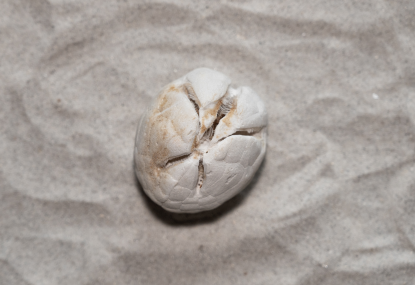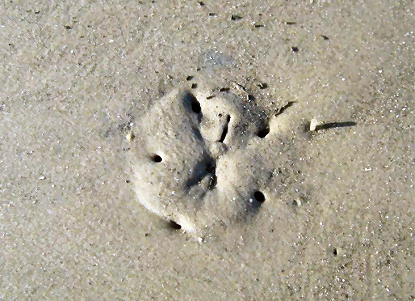

Clypeaster rosaceus
Commonly called a sea biscuit, or heart urchin, Inflated Sea Biscuits are somewhat small, being only a few inches in diameter. The test (internal skeleton) is fragile with four porous spaces (petaloids). The body is elongated with its mouth at one end of the animal and the anus at the other. This gives it a heart shape, hence its name. It is covered with spines of various colors, such as brown, green and red.
Inflated Sea Biscuits normally live in waters up to 160 feet, but have been documented at 1,500-foot depths. The urchins burrow 6 to 8 inches into the sand, head first. They continuously move their tubular feet, creating a shaft of water which provides them with oxygenated water from the sea floor surface. The tube feet also gather organic particles from the wet sediment around them. The feet then move the nourishment to its mouth. Living buried in the sand, they are not normally found alive.
Inflated Sea Biscuits reproduce through external fertilization. They release sperm and eggs into the water. After the egg is fertilized, it forms a planktonic larva which settles to the seafloor and develops into a Heart Urchin.
Live shells should never be taken from any Florida State Park.